Held in Manchester and online, the annual reports of the Vehicle/Track System Interface Committee (V/T SIC) and the Adhesion Research Group showcased a variety of research and development papers. As has been said before, even though railways are coming up to 200 years old, there is still much to be learned about the Vehicle Track Interface.
Starting with the V/T SIC presentations, Dr Mark Burstow, Principal Vehicle Track Dynamics Engineer at Network Rail, reported on the work of the permanent project group. He focussed on rail squats, spalling, and wheel rolling contact fatigue.
Squats
The project aimed to model the conditions that would lead to the formation of squats, a form of rolling contact defect in rails.
He described a working hypothesis that a combination of contact stress and tangential force appears to be a reasonable way of forecasting squats. Although just one parameter has previously worked reasonably well to predict rolling contact fatigue (RCF), a combination of different models for what initiates and makes squats grow might be needed.
RCF and spalling
Mark explained that spalling of material from the head of the rail is generally, but not exclusively, a low rail/tight radius curve problem and whilst the mechanism is understood, it is a challenge to predict the location and magnitude of spalling.
He highlighted the need to account for the different effects of leading and trailing wheelsets within a bogie and the effects of different vehicles in a train which may be travelling at different speeds though the curve. He presented force/direction plots for two locations which produced very different results: in one location, leading and trailing wheelsets have similar contact positions, with forces in different directions, whereas in another location, leading and trailing wheelsets have different contact positions and less interaction of the forces in different directions.
Mark’s final remarks were about wheel RCF which is an emerging issue on some newer fleets. He said that wheels are more complex to analyse than rails given braking and traction forces, curves and cant deficiencies, and running direction reversals. All these need to be understood – an area for more work!
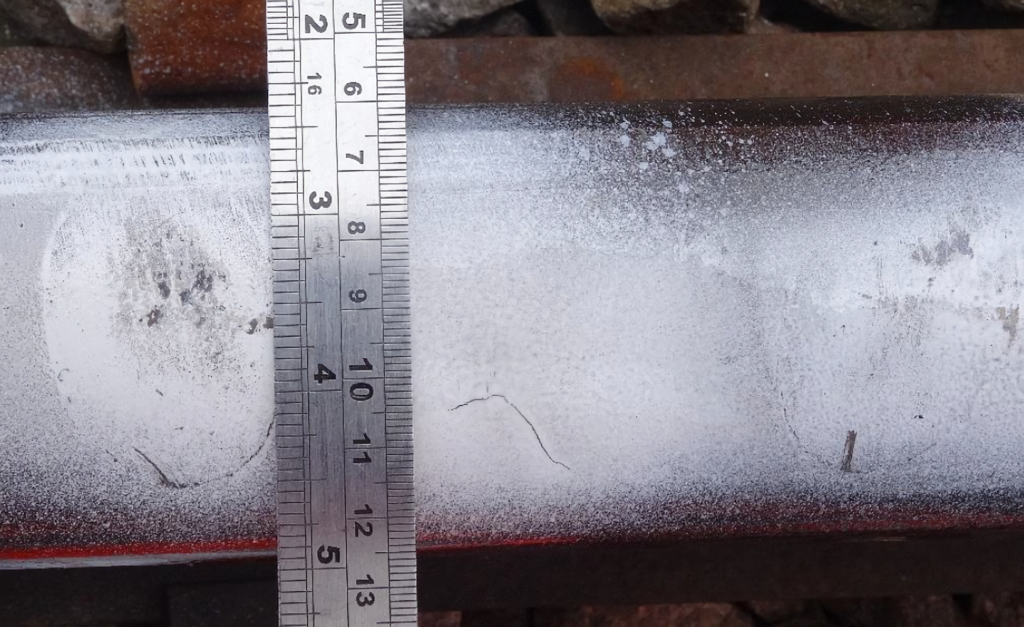
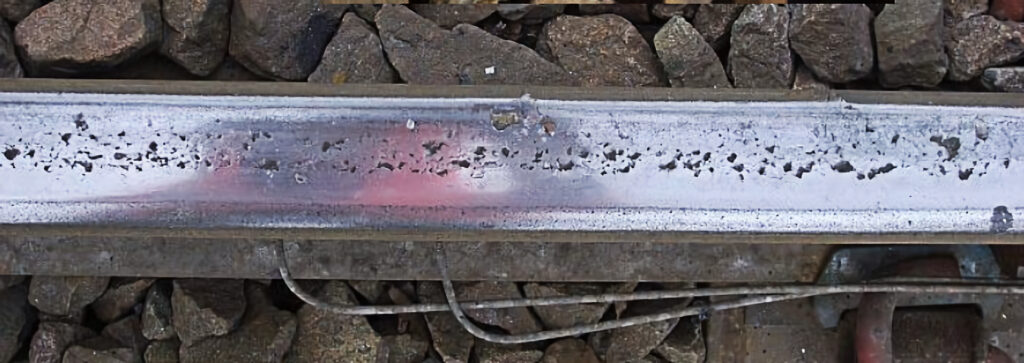
Monitoring wheel bearings
Rail Engineer has reported extensively on monitoring passenger train wheel bearings with both axle box mounted sensors and trackside monitoring kit. We have reported the value of such monitoring to assess bearing and wheel tread condition leading to better planning and sometimes reducing the frequency of maintenance. Vehicle mounted sensors can also provide information about track condition.
Several freight train derailments have been caused by defective or collapsed axle box bearings. Accident investigation reports have recommended research into improved axle bearing monitoring. Professor Adam Bevan from the Institute of Rail Research, Huddersfield University, reported on the business case for dynamic response monitoring of freight wagon axle bearings (Acoustic monitoring of axle bearings for freight vehicles, T1267). The university’s work evaluated several on-train and wayside systems and concluded that there is a good business case for monitoring freight vehicle axle bearings using wayside thermal and acoustic monitoring technology.
Onboard sensors were not favoured, partly because of the sheer number of sensors that would be required and partly because there is no electrical supply on the wagons.
The technology review also highlighted that failed or missing lubrication cannot easily be detected by acoustic/vibration monitoring alone. Thermal monitoring is more suitable in this case, however, but the time from detection to catastrophic failure can be short. Effective lubrication is therefore an essential part of a working good condition bearing system.
Lubrication
Keith Mack, quality standards manager at LNER, Chair of the BSI group on roller bearings, and Chair of the RSSB Wheelset Management Group, took up the issue of lubrication management with “what to do when your standard lubricant is withdrawn from the market?” Renolit MP3, a lubricant used extensively and for a long time, was withdrawn from the market because the sodium nitrite used in its composition had been banned. The Bearing Group within the Wheelset Management Group managed the change by creating a framework for managing the change; GMGN2682, Approval of Changes to Axle Bearing Lubricants.
The Group supported discussions with operators whilst working with potential suppliers on an alternative. Generally, Mobil Mobilith SHC100 lubricant was adopted although there are alternatives. There has been good take up for passenger vehicles with no known problems.
Keith also cited the Ohio derailment on 3 February 2023, where many wagons carrying hazardous materials became derailed when an axlebox failed. He pointed out that axlebox failures are few, especially considering the number of wagons in service but when they happen, the costs can be huge, perhaps large enough to put an operator out of business.
High temperatures
While Brian Whitney, Engineering Expert, Track and S&C Network Rail, usually talks about managing rail to try and reduce rail breaks to near zero, this year he talked about infrastructure performance during the hot weather in summer 2022. As everyone probably knows, rail expands in summer and contracts in winter. Traditional jointed track allows a level of expansion at the joints but there is no such opportunity with continuously welded rail (CWR) which, unless adequately restrained, will either expand, causing damage, or buckle.
CWR theory sensibly states: “CWR track shall have the buckling strength required to withstand the environmentally and operationally imposed loads for the range of expected operating conditions.”
Flat bottom rail on concrete sleepers, well bedded into strong ballast with appropriate side shoulders, generally delivers this objective. As well as buckling risk, track forces induced by high temperatures can also affect other track equipment, such as high compressive forces pushing the rail ends together at insulated rail joints causing track circuit failures and CWR exerting forces on switches and crossings leading to points failures when the point operating equipment is forced out of adjustment. Brian added that the opposite – high tensile forces during cold weather – lead to an increase in broken rails and affect the performance and reliability of S&C. In general, the maximum compressive and tensile stresses allowed are known and this allows the determination of temperature range to stay within these limits. The point at which there is no longitudinal stress is known as the stress-free temperature (SFT). On plain line, the right stress level can be achieved by cutting out a measured section of rail, literally stretching the two ends and re-welding.
A buckle is generally not created solely by hot weather and high rail temperatures, but by the presence of at least one other factor such as:
- Ballast disturbance (e.g., tamping, stoneblowing, opening out, lifting and packing, or slewing track).
- Ballast deficiency (e.g., insufficient ballast in the cribs or on the shoulder).
- Seized joints (e.g., over tightened fishplate bolts, lack of lubrication).
- Low joint closure temperature because expansion gaps are too small or too few in jointed track with rail lengths.

“Sites should not buckle if correctly mitigated during hot weather, e.g, applying an appropriate speed restriction to reduce the dynamic forces on the track” Brian said.
He wondered whether the majority of buckles were simply a small number of sites that had slipped through the deficiency identification process, compared to the many hundreds that were correctly recorded, managed, and prepared/mitigated through the application of speed restrictions?
Brian concluded that:
- Only 20% of the buckle sites were correctly recorded in the CRT Register.
- With hindsight, all but one of the sites should have been on the Register.
- Extensive blanket speeds and route closures were applied at the expense of performance and passenger needs.
- Changes to track construction specifications have generally led to a greater strength and capacity to manage extreme temperatures.
Effectiveness and practical use of watch persons with available resources and access in a modern railway needs to be re-considered
Technology, RCM, and effective preparation, needs to focus on higher risk sites.
VTISM
Andy Rhodes, business development manager and principal consultant at Serco Rail Technical Services, gave an update on upgrading the Vehicle Track Interaction Strategic Model (VTISM), RSSB Project T1258.
VTISM was originally released in 2006 and integrates various engineering models to help managers make strategic decisions such as cost forecasts, as shown in the diagram below and the table on page 37.
This upgrade will support Microsoft 365 and Windows 10 environments as well as including current track asset policies adopted by Network Rail and ensuring accurate predictions of: track damage and costs; recent asset renewals; unit costs; traffic changes; improved knowledge on asset behaviour; changes in renewal; maintenance and inspection policies, e.g., refurbishment activities; and review underlying model assumptions (track geometry and ride forces).
It will also include a number of technical refinements including: increasing the range of applications by extending VTISM’s library of routes and vehicle models; including further cost modelling capability (manual maintenance, safety, delays); and evaluating latest track damage research.
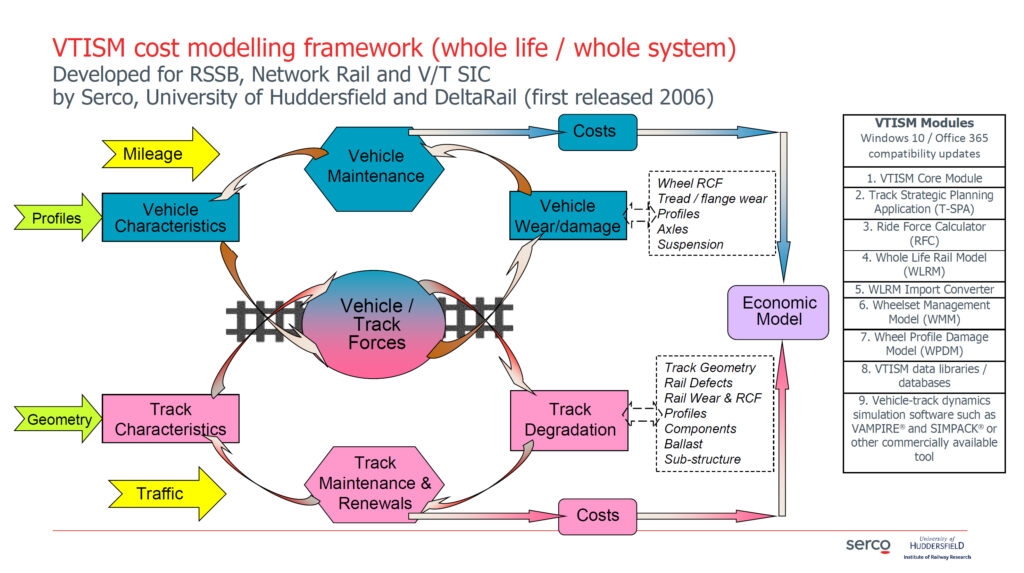
ADHERE
The Adhesion Research Group is facilitated by RSSB and has over 50 members from various backgrounds. It acts as sponsor for the ADHEsion REsearch challenge (ADHERE) programme, proposing and supporting delivery of research projects, whilst seeking ways of implementing solid research findings. It cooperates with the Seasonal Challenge Steering Group (SCSG) and Seasonal Challenge Communications Group (SCCG), to ensure that opportunities to implement successful research are seized.
Jordan Brant from the University of Huddersfield presented “Developing Highly Adherent Leaf Layers” seeking to understand how/why leaves bond to the rails in the way that causes so many problems. Experiments were carried out on the University’s HAROLD test rig which uses full size rail wheels on large diameter rollers representing rails. Jordan explained that the tests were carried out using a process that allows several factors (load, water, leaf type, rust) without having to vary each factor independently. This work delivered some useful results including:
- American oak leaves had a higher bonding strength than sycamore leaves for a given test input.
- Iron oxide increased bonding strength.
- The HAROLD leaf layer is chemically different to layers generated using small scale tests.
- Higher wheel loads remove more of the leaf layer during braking tests.
- A small number of leaves can produce a consistent black leaf layer and very low adhesion.
- Sycamore leaves were more durable than the American oak leaves.
- A standardised method for measuring leaf layer bonding strength has been developed.
- Consistent leaf layer production is useful for standardising low adhesion rail cleaning tests.
It was noted that the aerodynamics of leaves is an important factor in determining which leaves are more likely to be drawn into the wheel rail interface.
Dr Leonardo Gomez, University of York and Professor Roger Lewis, University of Sheffield, discussed ‘Understanding the Polysaccharide Composition of Crushed Leaves and Evaluating Potential Enzyme Treatments’ (RSSB project COF-G24-01). They established the range of leaf constituents, including cell wall polysaccharides, tannins, and lignin, that could cause low adhesion effects, and proposed adhesion mitigation through the use of enzymes that will digest the responsible molecular structures.
These hypotheses were subjected to a series of tests, though more work under conditions closer to the rail environment is required to complete the activity. The present work has established that leaf layer enzyme treatment increased traction over that seen with an untreated leaf layer and the type of enzymes that have better performance.
Professor Lewis also introduced Morinoye O. Foloronso who presented University of Sheffield’s work on ‘Low Adhesion Estimation through Video Image Machine Learning’ (RSSB project COF-UOS22-02) and from her PhD, ‘Improving Prediction of Low Adhesion Friction considering Transience’ (RSSB project COF-UOS-05).
Previous work had demonstrated that forward facing and downward facing video could be used to detect likely poor adhesion but on its own was not enough. The video might identify the black layer on the rails, moisture, oxides and/or other contamination of the rail, but there was no good mathematical description of the data from these images. In addition, information about temperature and humidity is required. Hence, a machine learning technique was proposed as shown in the diagram below.
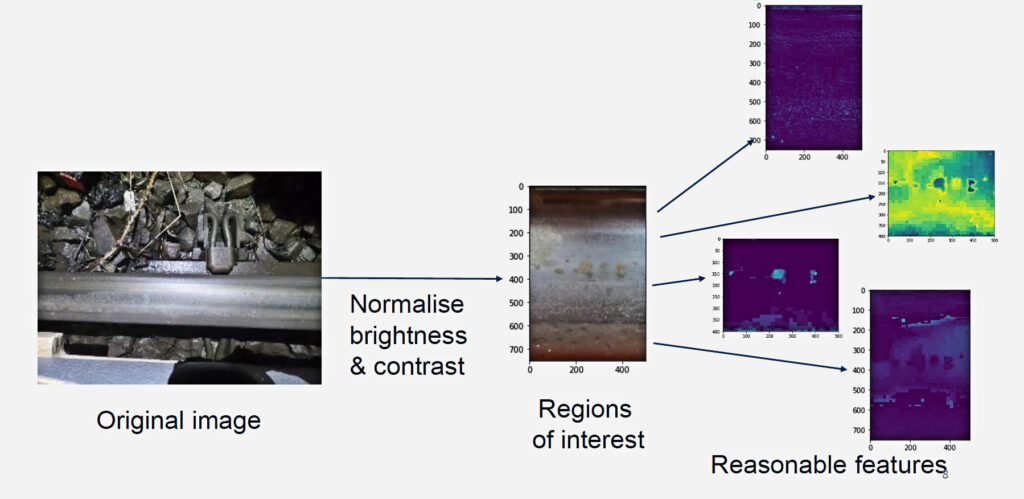
To make the model work, real data was required and over 600 data points (an image of the rail head, an image of the surroundings, temperature, humidity, and a friction measurement) were collected from six separate sites during autumn and winter of 2019 and 2020. It was also necessary to use traditional image analysis techniques illustrated in the diagram. The aim was to have a few numbers (e.g., colour, edge, brightness) rather than thousands of pixels.
Morinoye showed a device fitted with forward facing and downward cameras, analogue and infrared thermometers, and GPS sensors that can be fitted to a train’s lamp bracket together with microcontrollers for recording and translating sensor data. This is being trialled on the Wensleydale Railway.
Validation has shown positive results, but Morinoye explained that it has yet to be confirmed that the prediction tool has a robust data bank. The potential uses for the tool include: informing drivers of following trains of problems in real time; identifying where treatment is needed (e.g., in combination with cleaning technology); building up data on low adhesion conditions for mitigation planning; verifying low adhesion forecasts; and helping to understand the process by which contamination builds up.
Adhesion and train behaviour
The final presentation was given by Dr Chris Ward from Loughborough University, whose presentation, Tribometer Train, was about estimating adhesion from changes in the dynamic behaviour of the train or, as he put it: “does a train wobble differently on low adhesion?”
Whilst recognising the team from Network Rail, Loughborough and Sheffield Universities, and Perpetuum (now part of Hitachi), he also paid tribute to the late Professor Roger Goodall whose idea this was back 20 years ago. This project involved carrying out tests using a Network Rail Multi Purpose Vehicle (MPV).
The basis of the work was that different movements infer different adhesion levels. In the longitudinal direction, this is familiar with wheel spin or slip highlighting low adhesion. But this is only apparent when accelerating or decelerating. Could changes in lateral and yaw dynamics provide continuous adhesion measurement?
Test were carried out in summer 2022. Chris observed that delivering low adhesion during a heat wave was “a challenge”. Before carrying out the track tests, the MPV was simulated in Simpack with correct dimensions, weights, suspension, and drive parameters. In addition, the proposed instrumentation was modelled. Sensors were fitted to axleboxes, bogies and body, GPS was fitted, and brake pressure and wheel speed were measured.
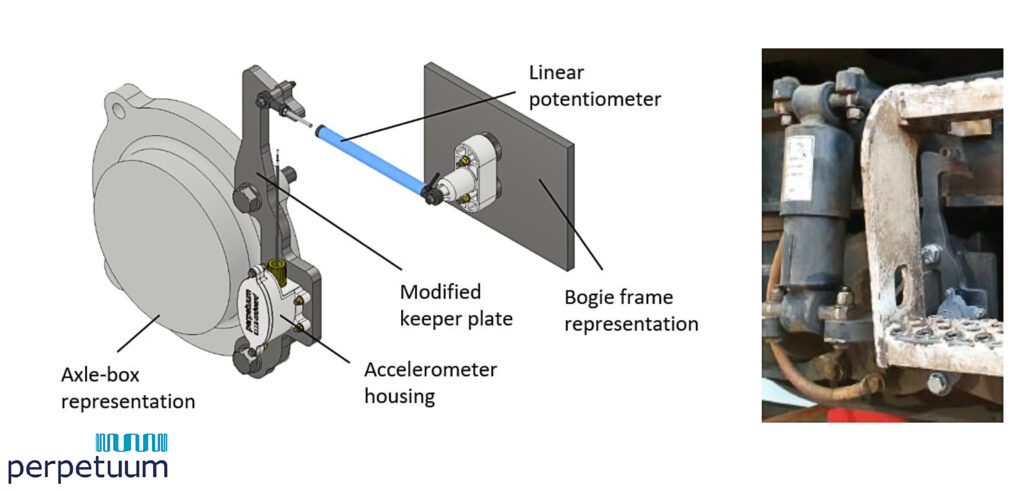
Tests were carried out at RIDC Tuxford on a flat and straight section with sufficient acceleration and braking zones. The test area was approximately 400 metres long (the practical limit for producing areas of low adhesion but allowing for the collection of sufficient data for each run). The lowest adhesion level was provided by wetted paper tape – a big challenge during the hot weather.
Tests were carried out in both wet and dry conditions delivering high, intermediate, and low friction at mostly constant speeds of 10, 40, and 60 mph. Tribometer friction measurements were taken before and after each run. Coefficients of friction between 0.1 and 0.3 were achieved. Over 12 running days, tests were actually carried out at 16, 26, 40, and 60mph. The lower speeds varied from the plan because of gear change speeds on the MPV. A total of 83 runs took place and up to 30GB of data per day was generated.
Chris said that the data is still being analysed, in particular to filter a lot of noise on the signals. He concluded that the algorithms developed so far are promising and validate the concept of vehicle dynamics variation with adhesion change. The next steps will be to bring the various methods together and identify a commercial proposition.
Conclusion
ADHERE and, to an extent, V/TSIC 2023, focussed on research projects that are some way from commercial exploitation. It will be interesting to follow their progress.
With thanks to the presenters and to Ben Altman from RSSB for their assistance in preparing this article.

